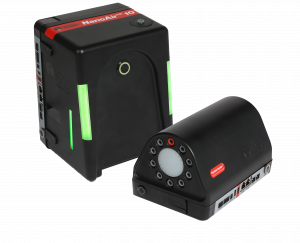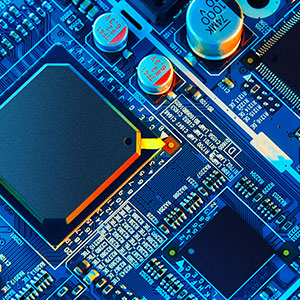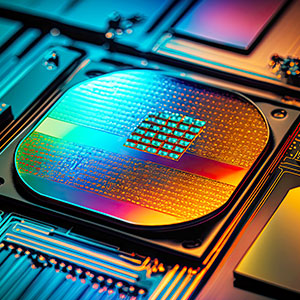Nanoparticle Counter NanoAir 10 for Detecting Contamination in Semiconductor Manufacturing
Using a Nanoparticle Counter in highly sensitive areas of semiconductor manufacturing helps to effectively identify and control contamination so that yields can be improved.
Airborne Nanoparticle Detection in cleanrooms and mini-environments for particle sizes down to 100 nm is a common practice and has been widely adopted by most of the semiconductor industry to validate the cleanliness of their state-of-the-art factories. There is a growing need amongst industry leaders to monitor the ambient air as close to their products as possible to ensure no particles reside at the product interface and to get higher sensitivity 10 nm nanoparticle counters. The increasing attention on driving better product yield performance with advanced technology nodes has drawn reasonable discussion for in-tool monitoring to reduce nanoparticles that can have an impact on yield. With that in mind, Particle Measuring Systems (PMS) launched the new NanoAir™ 10 Nanoparticle Counter that measures particles down to 10 nm and the ParticleSeeker™ Smart Manifold system which is the first-ever manifold designed to handle nanoparticle transport. This product unlocks a new world of monitoring possibilities, providing a look into a current blind spot of the requirements and needs in the industry.
Semiconductor Tool Monitoring Solution
The NanoAir 10 Nanoparticle Counter is a revolutionary product from Particle Measuring Systems (PMS). Designed to monitor ultra-clean environments, it delivers 10 nm detection sensitivity at a sample flow rate of 2.8 L/min (0.1 CFM).
The ParticleSeeker Smart Manifold is a 10-port manifold that supports applications that require multiple sample locations. The manifold can be used monitor in sequential or programmed sequences.
For an overview of the NanoAir 10 Condensation Particle Counter and ParticleSeeker Manifold, see this introduction video.
Optical Particle Counters (OPC)
Taditional optical particle counters (OPCs) allow particle size detection down to 100 nm. The benefit of OPCs within the process tools is the quick detection of particles that can result in yield-impacting defects. However, traditional OPCs only allow particle detection down to 100 nm and the advancement in technology is allowing the detection of particles at smaller dimensions.
Condensation Particle Counters (CPC) as Nanoparticle Counters
A condensation particle counter (CPC) is an instrument used to measure the concentration of very small particles in a gas media. CPCs operate based on the concept of growing very small particles to a size at which they can be counted by a traditional Optical Particle Counter (OPC). This is done by creating a supersaturated vapor and triggering condensation of the vapor onto the surface of the particles to grow them to a larger size.
For more information about how CPCs work, watch this video.





